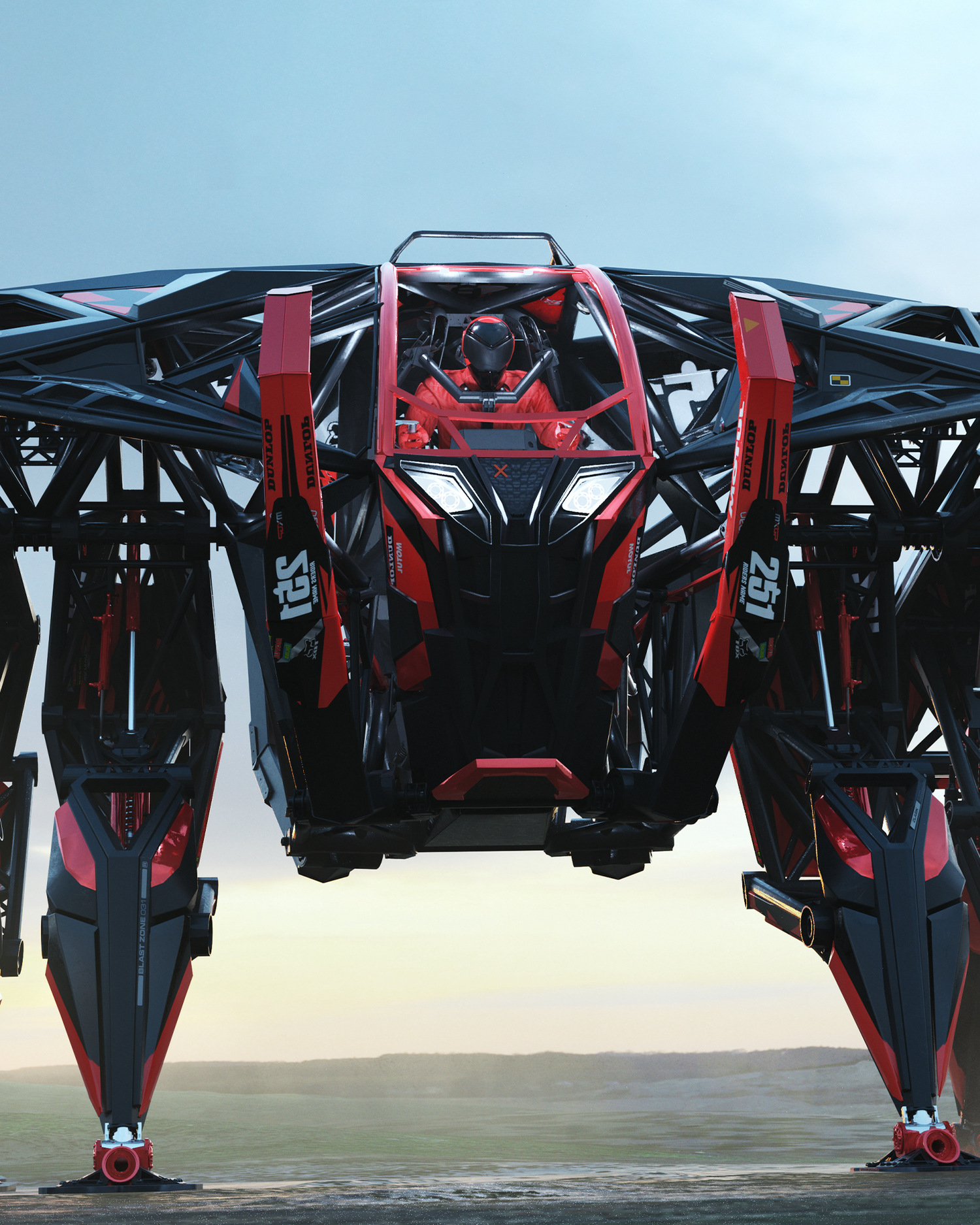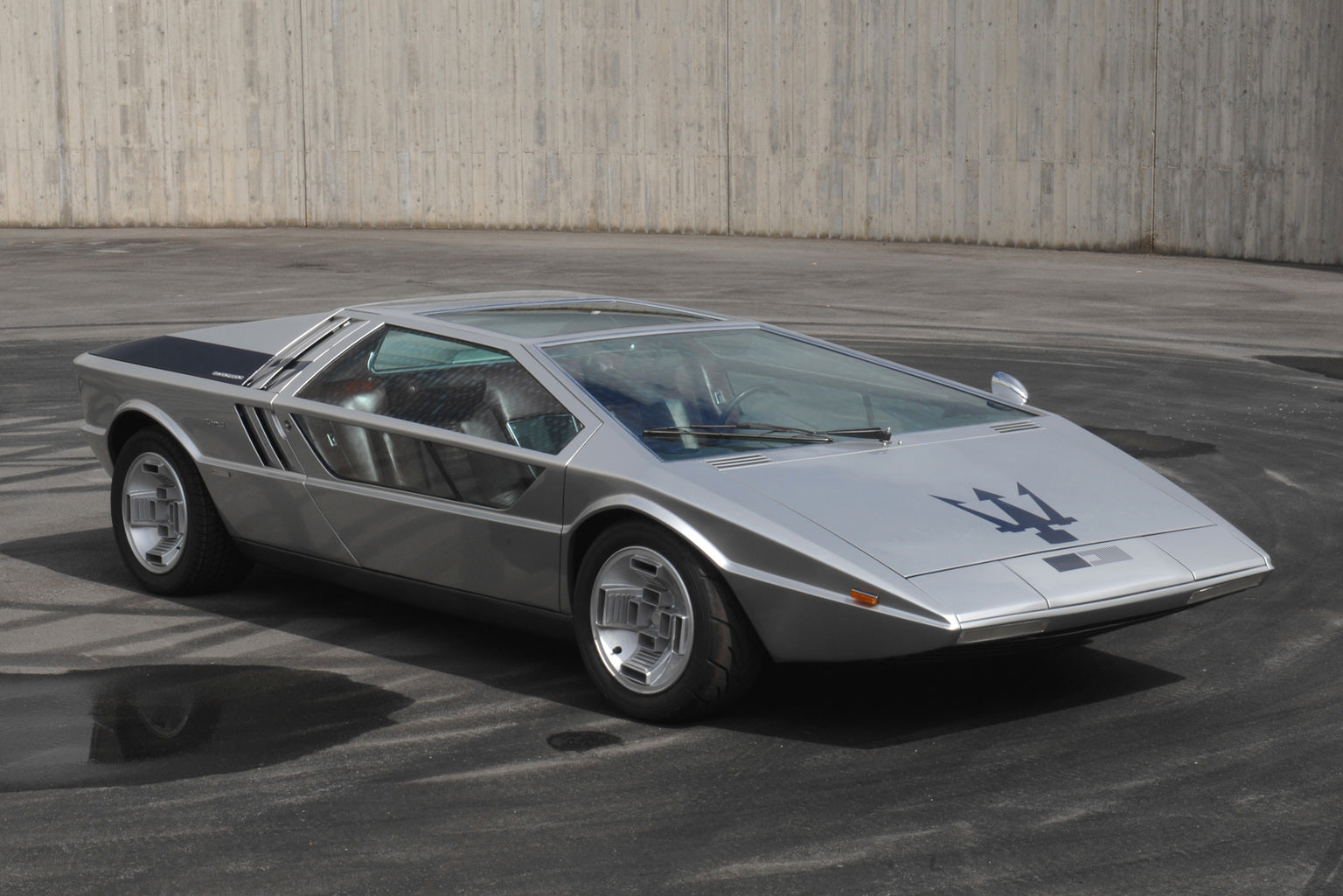Giant quadruped mech robots piloted by a single human are the things of cyberpunk fantasies. Mech robots have been the subject of cultural imagination for decades, from Gundam to Ghost In The Shell. But this is no longer science fiction, a plucky start-up based out of British Columbia named Exosapien Robotics has brought one to life, and its is as exhilarating, jaw-dropping, and technologically brilliant as you imagined. Introducing Prosthesis and its inventor Jonathan Tippett.
How does the conversation go when you decide to build a giant four tonne sci-fi mech robot?
The inception story of this project reaches all the way back into my childhood. I like to describe our prototype mech suit as a cross between an excavator, a dune buggy and a dinosaur - not coincidentally three of my favourite things. The idea really is a culmination of pretty much everything I've ever devoted lots of time to and sought mastery of, going all the way back to racing 1/10 scale radio control electric cars as a kid.
I later moved on to mountain biking, snowboarding, motorcycle riding, martial arts and playing drums, and underlying all of it was an abiding fascination and love of robotics and all things mechanical which I was able to earn a deep understanding of through my mechanical engineering practice. Some of my most rewarding moments in life have been performing a physically and mentally challenging activity, especially when they included an element of danger and technology to up the stakes. All of these elements were combined in the creative crucible of The Burning Man festival in the Nevada desert some decades ago and gave rise to the concept of a giant, powered, entirely human-controlled mech suit for sport. From its very inception, Prosthesis and this technology as a whole are being developed as a celebration of human skill and the age-old pursuit of physical mastery. Our primary goal is to create a new experience for humans.
What is the experience of piloting the Prosthesis like, and how do you drive the machine?
There is nothing on earth like piloting the mech. It's incredible. The very first time you stand up in the machine and rise up - at alarming speed - to a height of four meters, you literally feel like a giant. It is an addictive rush. It is challenging to adapt to a 4000kg quadruped with two hearts outputting a total of 150kW but after about twenty hours of training and practice, you begin to internalize your new bodily kinematics and you begin too develop reflexes. You start moving the machine without conscious thought. Soon you're walking from A to B and doing things, like flipping cars, as though you are actually a giant. At times, when you're really in the zone, it feels like your feet are on the ground. And everytime you get out, you just want to get back in as soon as possible. From an engineering standpoint what was one of the hardest challenges with the Prosthesis? By far the hardest part of developing our patented motion control technology was connecting the pilot to the machine in a way that was highly responsive yet stable. The overarching design philosophy was determining the optimum level of technological intervention to maximize human experience. Earlier versions were raw. They didn't even use electricity. They used what I call the "hydraulic logic circuit" which hydraulically connected the pilot, the mech and the powered hydraulic system with hoses and fittings. This produced a very smooth, stable control interface but the input forces were too high and the adjustability was too low. I had to accept another level of technology into the mix: Electronics. This brought us the tremendous versatility that comes with a code-based control system and a plethora of existing hydraulic valve elements. Earlier iterations of this system, however, were stiff and lifeless. We employed industry standard hydraulic circuits developed primarily for industrial equipment which is optimized for stability and reducing operator fatigue. This of course is not suitable for a sports machine and totally inadequate when the operator needs to feel the kinematics of the machine they are operating directly to attain a high level of performance. After years of testing, and training as a pilot, I eventually gained the confidence, not only in my understanding of hydraulics, but in my skill as a pilot, to remove some of the standard hydraulic elements that stabilize most hydraulic motion control systems. At first the machine was a bucking bronco but as we improved the fidelity of the exoskeletal interface, the speed of the electronics and the sophistication of the code, it allowed us to employ these more responsive hydraulic circuits and the system we now have was born. The total development time to get to this point was eleven years.
The whole concept of Prosthesis is very cyberpunk, were there any cultural influences that impacted its aesthetic and functional design?
It can be hard to know what elements of one's design process are original thought versus what are driven by influences. As a kid I watched Transformers, Battletech and was enraptured by the Power Loader in James Cameron's ‘Aliens’. Other mechs that are favorites of mine include the Avatar AMP suit, the gorgeous alien mech suit in District 9 which came after this project was well underway. Of course, the biggest difference between this project and any of the above are that this machine had to work in real life, so the most dominant design influence were the laws of physics. Trophy trucks and dune buggies are also beholden to these laws and served as important design benchmarks in the realm of high performance race machines driven by function, but whenever there was engineering latitude for style I was no doubt influenced by the Sci-Fi machines of my childhood.
The incredible renders of the machine by Min Guen show concepts like racing and arena shows, are you aiming to build multiple Prosthesis machines and evolve to events like this?
Our vision for this sport is to have five or six athletes going shoulder to shoulder, through complex technical obstacle courses, wearing giant powered mech suits. The renders Min made were done after lengthy, excited conversations with him about this vision. Even with the limited images he had time to create, were so excited to actually see a visual representation of what we have been dreaming of for so many years. We would be fascinated to see if other artists or designers had visions for what they think mech racing could include.
Prosthesis gets likened to the ‘Strandbeest’ style machine for its looks, can you explain how the robots are significantly different?
Yes, we are quite familiar with Jansen and his Strandbeests series and admire its creativity and beauty. His work is often referenced because they are large walking things made of round white tubing. As much as a comparison is flattering, the aesthetics are where the similarities end. Technologically the two things are very different. Our technology is robust, powered and all terrain whereas his artworks are delicate, passive and meant for smooth beach surfaces only. Philosophically, Janssen's artworks are studies in simplicity and ruminations on autonomy. Our technology is specifically made purely to use attendance engineering to create new experiences for humans. My previous walking machine project, the Mondo Spider was slightly more similar to Janssen's Strandbeests in that it had a leg linkage that turned rotary motion into stepping motion but the lack of human skill required and lack of all-terrain capability led me in the direction of what subsequently became Prosthesis.
Prosthesis seems like the only fully usable ‘known’ mech robot in the world, are there any competitors out there that you admire the work of or any robotics teams that have shared their admiration of the Prosthesis?
As far as we're aware there are no functional technologies that match the size, power and agility of Prosthesis. The Method 2 from Hankook Mirae is an impressive piece of technology, with a staggeringly large development budget (roughly 100 times our own) but which has autonomous lower limbs capable of navigating only smooth, level surfaces, and human-controlled upper limbs with no positional or force feedback that I'm aware of. Another project similar in spirit in some ways was Megabots. This was a sports/entertainment robot venture that ultimately failed because they did not succeed in creating a large-scale walking mech suit. I'm friends with the former founders. We share a great mutual respect and regularly commiserate over the challenges associated with launching a sports League based on developing new, large-scale robotic technology. Ironically, one of the innovations that I most closely relate to is Richard Browning's jet suit technology.
I reached out to him several years ago when I saw a video of his very early development and immediately recognized him as a kindred spirit, using advanced technology to leverage the human nervous system and create an unprecedented new human experience. I met him shortly thereafter when he was just getting it off the ground (if you pardon the aviation pun). He came to Vancouver to give his now iconic TED talk and I was able to help him find a clandestine location to calibrate his turbines to sea level conditions before his demo. We stayed in touch ever since and have a standing agreement to "let me try yours, if I let you try mine". It's a rumor that Mr Browning will be in California in July to deliver pilot training so we are looking to find a way to finance our own trip down there and have this great meeting of Technologies.
In real world objects, how strong is the Prosthesis, what would it enable a human to lift, and pull using the machine?
Technically Prosthesis amplifies the operator's inputs by about by 50x. In practical terms that allows you to flip a 4000kg pickup truck, drag an 8000kg pickup truck and trailer out of the sand or lift a 500kg log without any noticeable effort.
You’ve taken a very mechanical approach to the mech, with no automation onboard, how do you envisage humans and machines interacting in 2050?
The trend we see in human machine interaction is more and more seamless integration. Machines becoming invisible partners, making us smarter, faster and stronger. I would describe myself as a "spiritual technophile", which means I embrace technology that feeds the human spirit. There are some exciting advances in the area of direct brain interfaces, like Neurolink, with some great applications to come out of it but, for us, engaging the pilot’s whole body is key. It will be a long time before anything can replace the deep satisfaction that comes from the unification of body, mind and spirit through an intense and focused physical practice. Our team slogan is "Carpe machinam ne the Machinam carpet." which means "Seize the machine before the machine seizes you." Or just "Carpe Machinam!" To that end, we are committed to keeping the human-in-the-loop but we can imagine a future where our powered exo-suits adopt carefully selected elements of autonomy, with the goal of making pilot and mech like dance partners, like horse and rider, pilot and Titan, but with the option for the pilot to take total control at any time. Mech and pilot will be one but the human pilot remains the spirit of the machine.
What can we expect to see next from Exosapien, where is the Prosthesis going next?
Our next step is to take all of the engineering knowledge we've gained over the last five years of testing and use it to build the next generation of mech technology. Fierce, agile machines about two thirds of the size, half the weight and three to four times the power. Raptor class machines. As wicked as these machines will be, technologically speaking, we consider the work we are doing to be more that just engineering. We view it as part of our human technocultural evolution. We aren't just building cool exoskeletons to do stuff, we are expanding the scope of human experience and capacity. We are building these mechs for humans! The development of this technology is creating a fork in the historical path beyond which mechs will be part of our world. Because of this perspective, we want to give the opportunity to as many people as possible to be part of the revolution. That means that in addition too raising money through the more conventional VC or private equity route, we plan to raise money through a crowdfunding and/or an NFT campaign. With a target launch date in the early fall.



